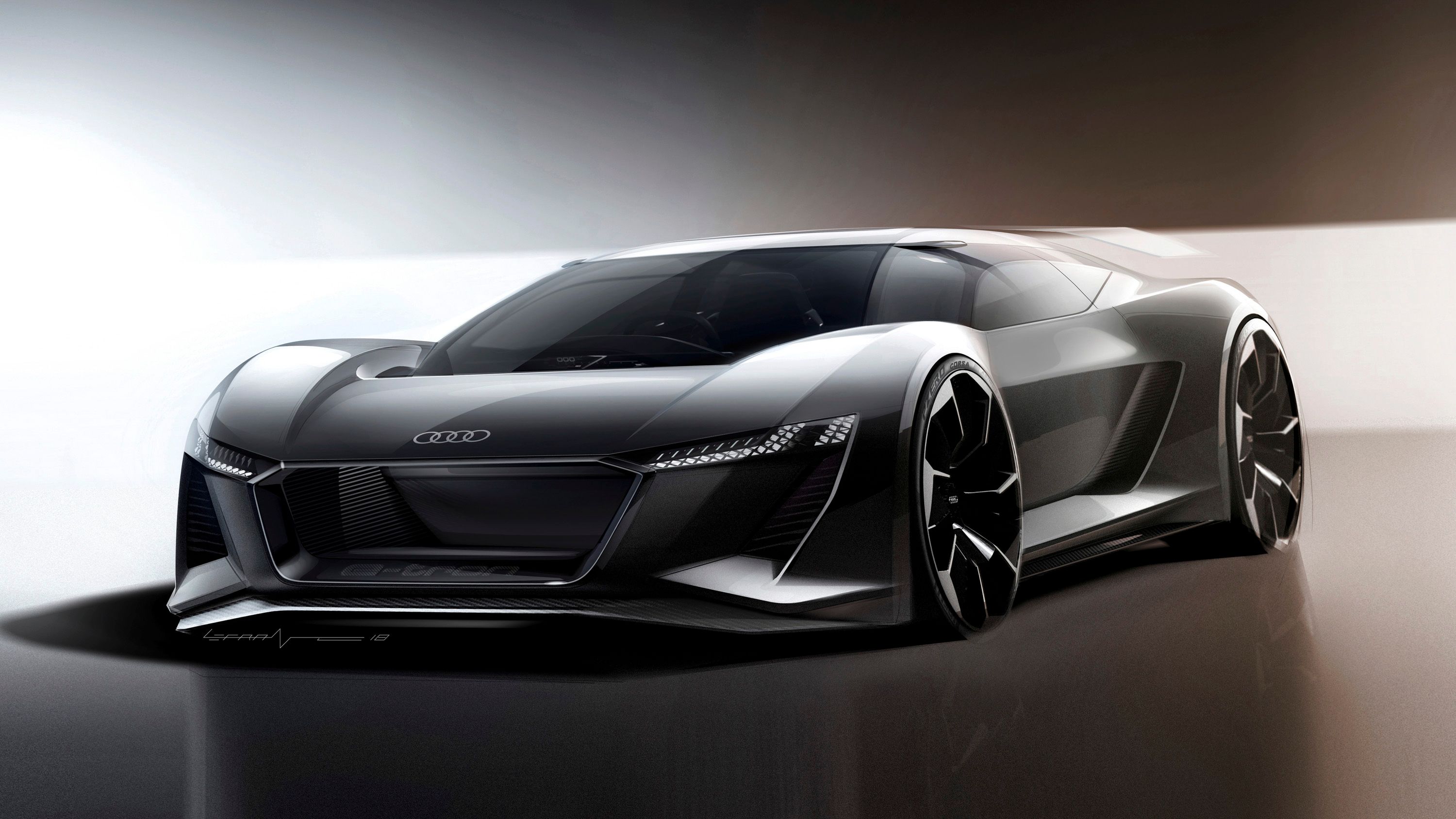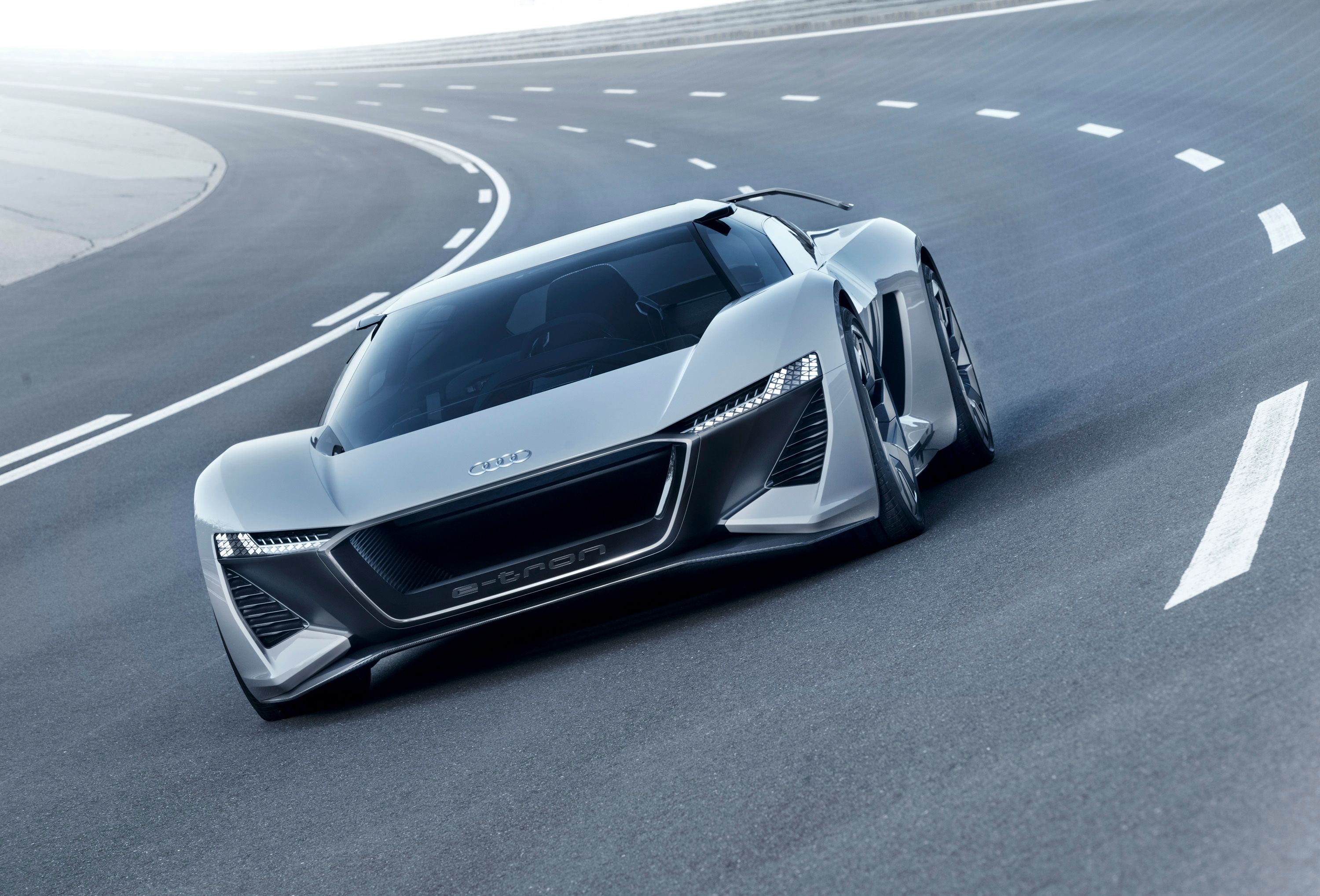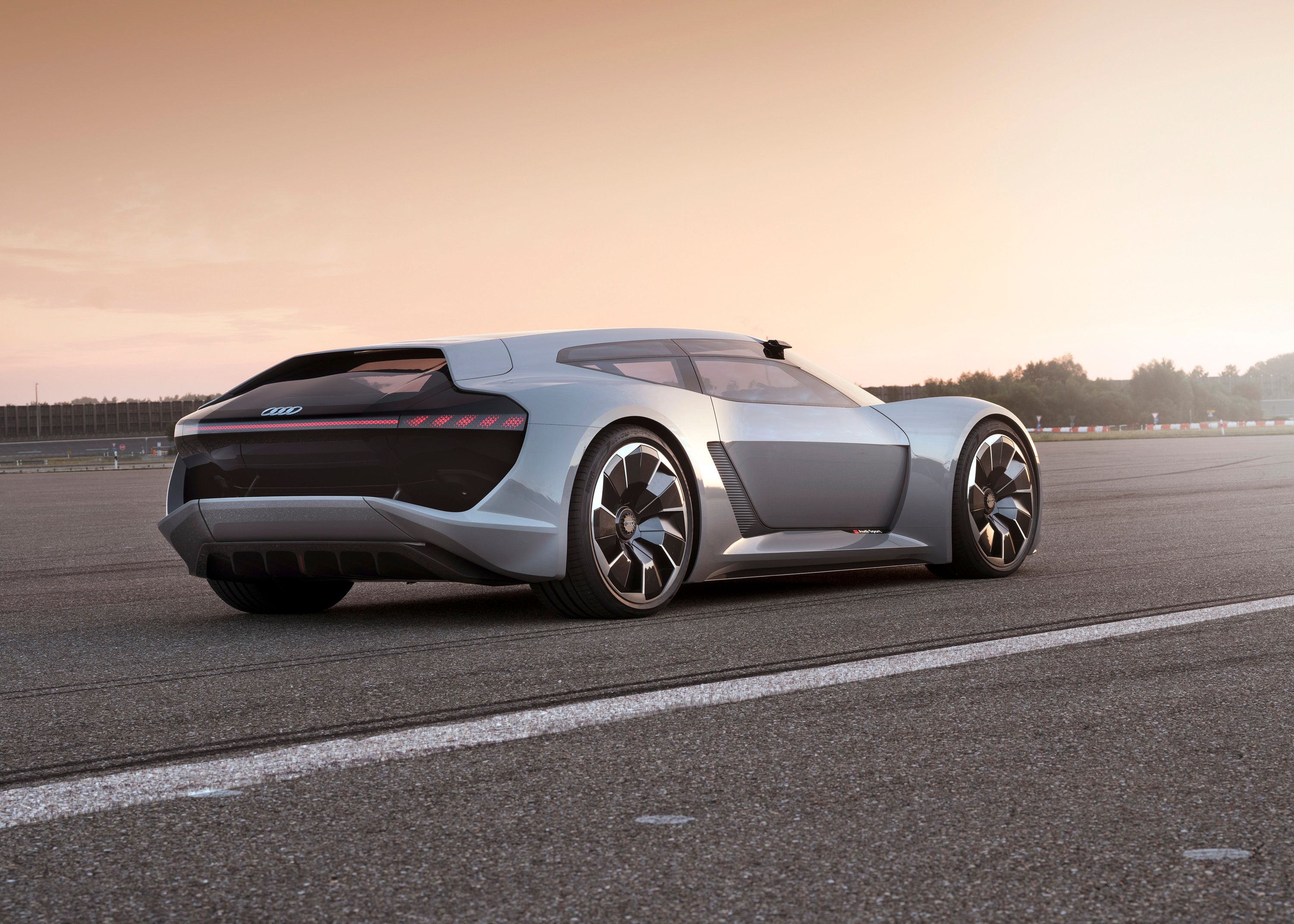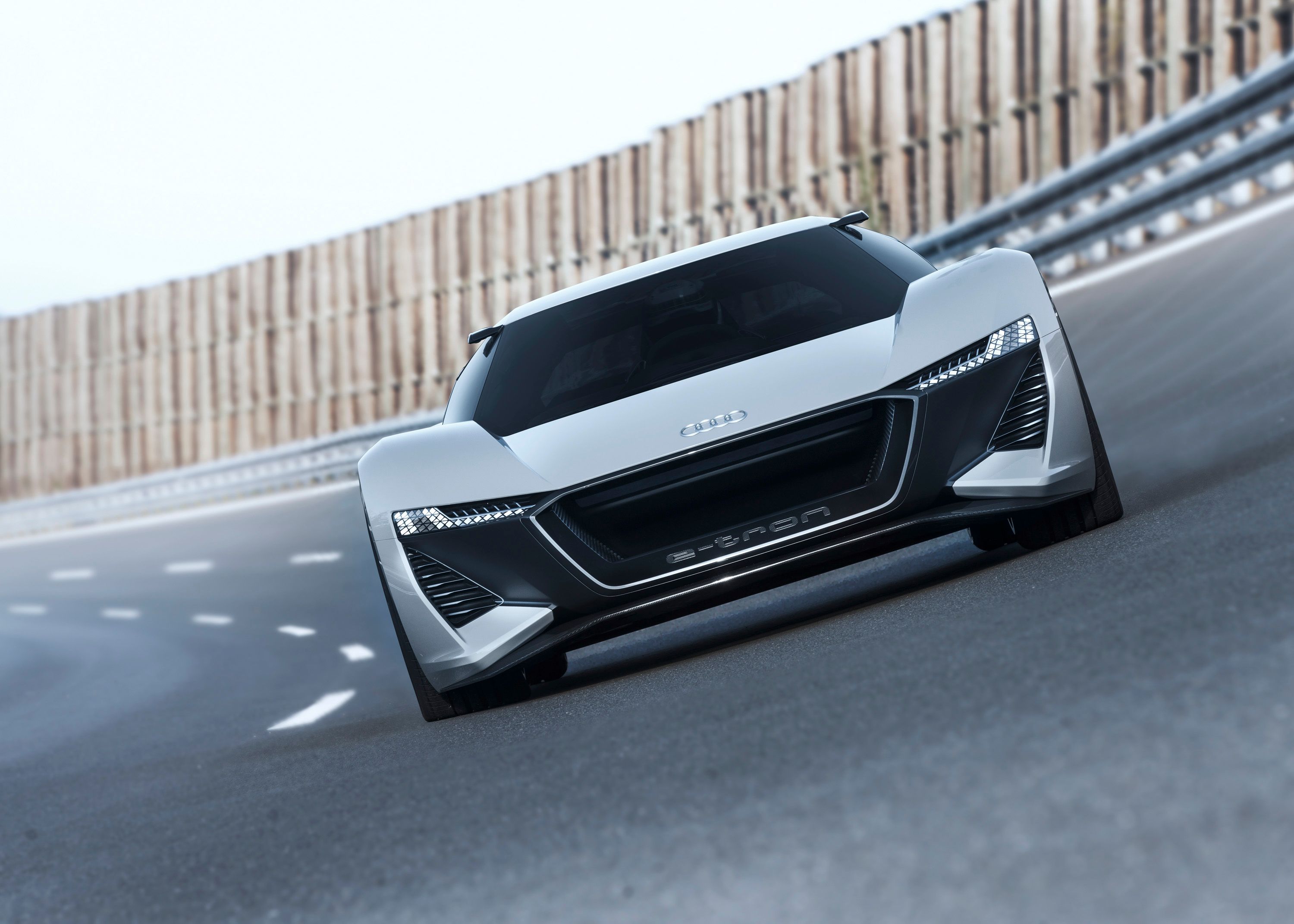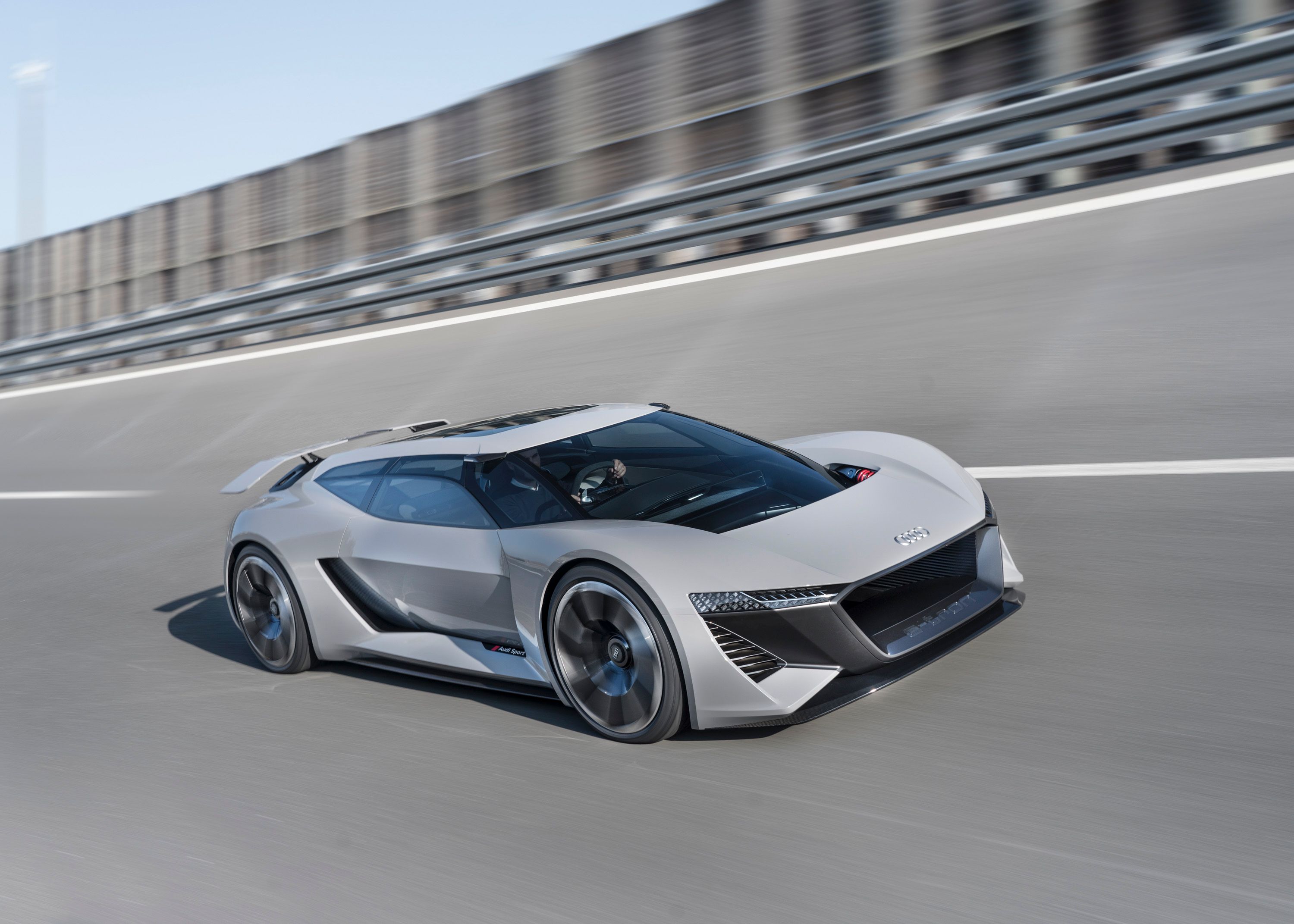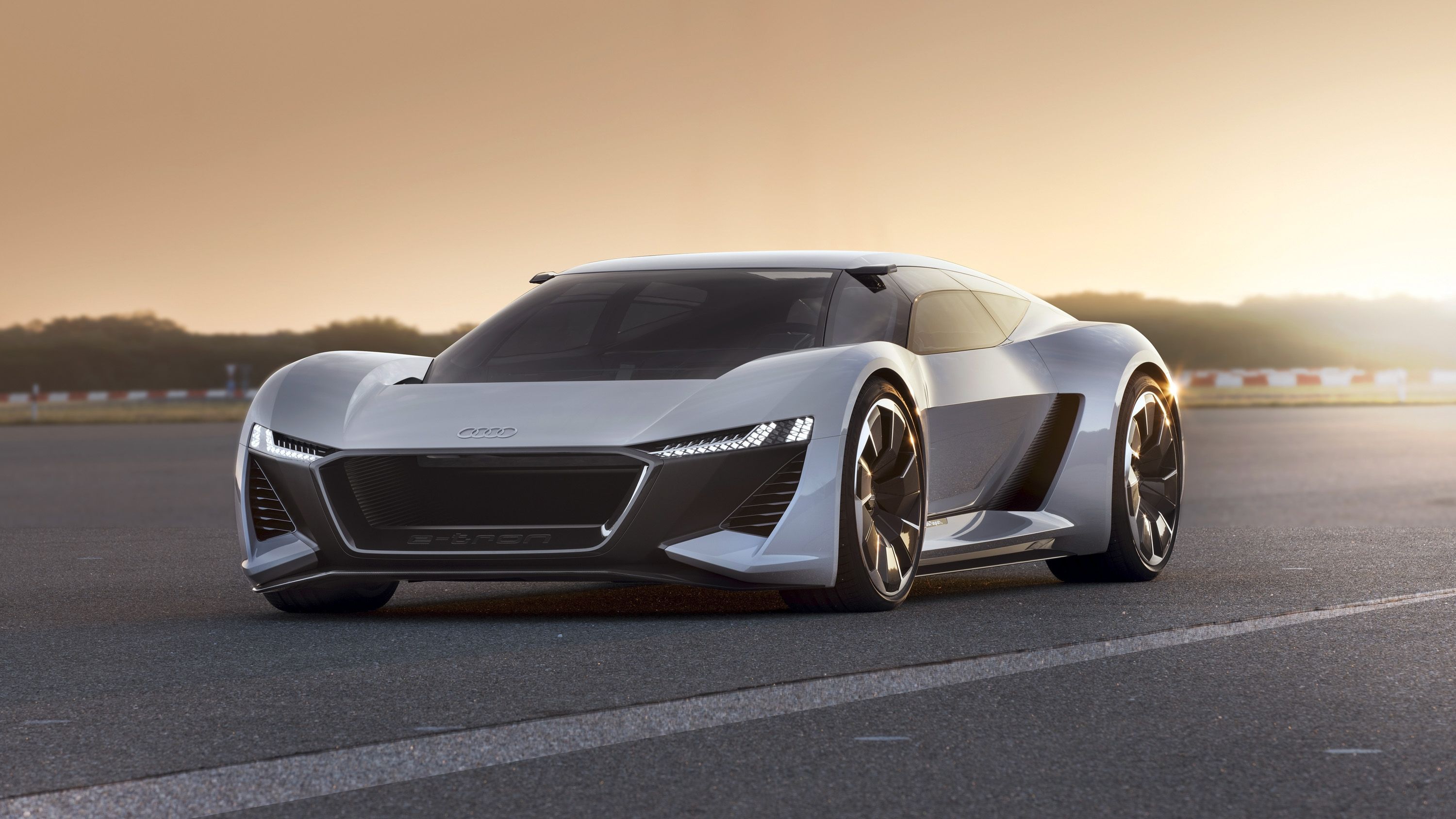We all now that the Dirty VAG loves to share its technology and platforms among its various appendages – a Bentley is just an Audi, and an Audi is Just a Porsche. With that in mind, we already figured out that the J1 platform that underpins the Porsche Taycan will eventually funnel down to other automakers, with brands like Audi, Bentley, and even Lamborghini eventually placing their in-house designs on top of the same chassis and battery technology. Eventually, real-life cars will all feature the same guts underneath and bodies on top – kind of like remote control cars d today. And, that’s where we’re at now as Audi starts to plan a replacement for the aging Audi R8. In doing so, CAR Magazine reports that the company will take the Taycan’s J1 platform and place it under an all-new body, creating a car that will go by the name “E-Tron GTR.” We already know quite a bit about it, but how will it serve as a spiritual successor to the Audi R8? Well, it probably won't.
2022 Audi E-Tron GTR – The All-Electric Replacement for the Audi R8
Before I dive too deep into the guts of this new information, I must point out that CAR Magazine quotes unnamed sources so, while some of it makes a lot of sense, I wouldn’t place any serious bets based on the information you’re about to read.
The truth is that the Audi R8 is on its way out. Sure, the current generation has only been on the market for four years as of the time of this writing, but that also means that Audi needs to get to work on a replacement. Unfortunately, that means the mid-engined car is living on borrowed time. Car Magazine is now reporting that the current Audi R8 will be the last model to feature not only a mid-engine configuration but any engine at all. It will be replaced by the Audi E-Tron GTR. And, as you probably guessed by the E-Tron name, it will be an all-electric model.
The R8-like appearance would make sense from a marketing standpoint. Killing off the R8 and putting a car with a new powertrain, new look, and new name in its place might not play out so well. However, we don’t expect it to look quite as close to the current R8. Audi will probably take some evolutionary freedom and make the car look similar but little like the current model. And Yes; it will feature an incredibly fake grille in the front because that’s where the world is going these days, it seems.
More importantly, however, is that – thanks to the Taycan’s J1 platform – the E-Tron GTR will offer up wireless charging, all-wheel drive, and as much as 300 miles of range. Sources have apparently said that the car will feature a 95-kWh battery, but there’s no word as to what kind of quick-charging capability it will have or how feasible it will be to drive on a regular basis.
2018 Audi PB18 E-Tron Concept specifications
|
Drivetrain |
3 Electric Motors |
|
Battery |
95 kWh |
|
Static Horsepower |
604 HP |
|
Static Torque |
TBA |
|
Driving Horsepower |
671 HP |
|
Driving Torque |
612 LB-FT |
|
Under Temp Boost |
764 Horsepower |
|
0-to-62 MPH |
2 Seconds |
|
Electric Range |
300 Miles |
|
Charging System |
800 Volts |
The Audi E-Tron GTR Will Probably Be More Expensive than the R8
Let me be clear, there has been no word as far as pricing goes, so this is all speculation, but we have a feeling that the E-Tron GTR will actually end up being more expensive. And, to take things a step further, it’s probably likely that Audi will offer a number of trims with varied performance and range. Think about the current crop of all-electric cars. They were supposed to set us free, save us money and, ultimately, be affordable. But, even the latest Tesla Model 3 can get quite expensive if you don’t want to settle for the absolutely bare minimum.
Because of the extreme performance offered by electric drivetrains – sources predict that the E-Tron GTR will hit 60 mph in some 2.0 seconds – Audi will feel it only appropriate to sell it at even more of a premium than the current R8. And, it will get away with it too because people will be willing to pay for the newest and greatest on the market. That’s cool, and all, but with the way automakers are making cars identical under the skin, this sets a precedent for high-EV prices and high-profit margins for automakers, and we need to keep them in check. Let me explain.
One Platform, Lots of Models, Ripped Off Customers
Right now, electric cars bring in slim profits. Naturally, they don’t sell anywhere near as well as cars with internal combustion engines. However, as time moves on this will change and, eventually, EVs will sell like hot cakes – from entry-level sedans all the way up to the finest exotic models you can think of. Eventually, the profit margins will get better but, with the way automakers are planning to use the same platform for a number of vehicles, they could – in theory – mass produce the same modular platform for an entire lineup and simply bolt on different bodies. That’s similar to what’s happening now, but it’s going to get easier and worse.
Eventually, the cost to produce even high-end cars will drop significantly and, if we don’t keep automakers in check, the costs of models will remain high while they rake in crazy profits. Just watch, as EVs continue to grow in popularity and are forced on us by emissions regulations, the cost of car ownership will go up. Eventually, we’ll be forced into car subscription and ride-hailing services as automakers bring in more money and leave us more reliant on them than ever.
Further reading
Read our full review on the 2018 Audi PB18 e-tron Concept.
Read our full review on the 2019 Audi R8.
Read our full speculative review on the 2020 Porsche Taycan.

